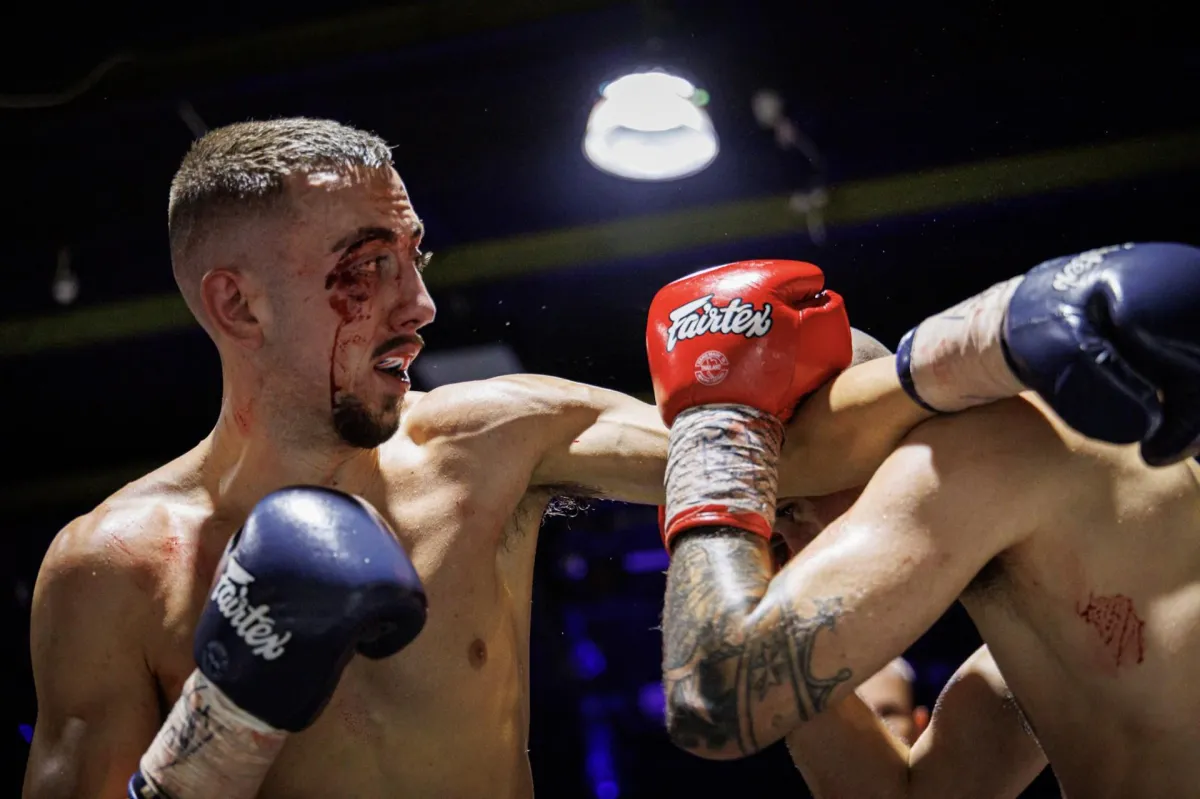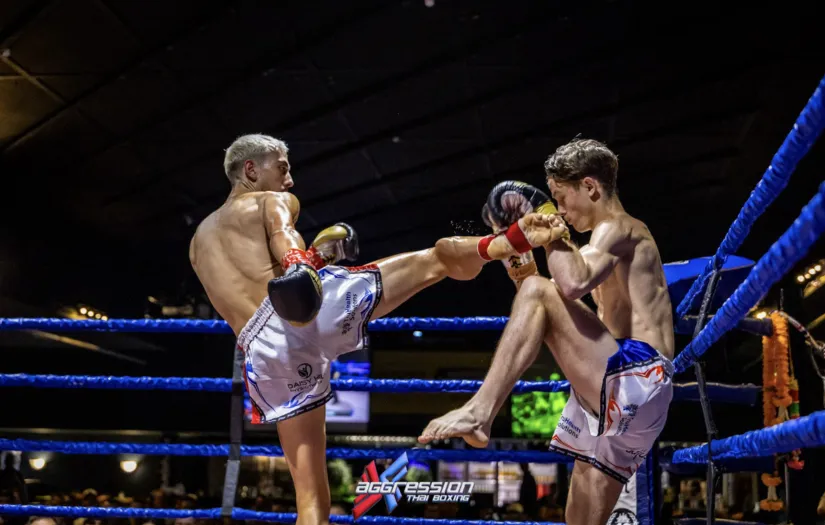
Maximize Strength: MMA Powerlifting Training Tips
MMA Fighters: Maximize Performance With These Powerlifting Training Tips!
Are you an MMA fighter looking to enhance your performance in the octagon? Powerlifting might be the key to unlocking your full potential. This article explores how integrating powerlifting into your training regimen can boost your strength, power, and overall fighting ability. We'll cover essential exercises, common mistakes to avoid, and how to tailor a powerlifting program for MMA success. By incorporating powerlifting techniques, you'll develop stronger triceps, improved lung capacity, and more resilient knees. Learn how to maximize your performance and gain a competitive edge in MMA.
Understanding the Benefits of Powerlifting for MMA Fighters

Powerlifting offers significant benefits for MMA fighters, enhancing their physical fitness and performance in the octagon. This strength training method boosts striking power, increases explosiveness for effective takedowns, improves muscular endurance for grappling, and reduces injury risk. By incorporating strength-camp exercises, fighters can optimize their training regimen and maximize their potential in both jujutsu and striking disciplines.
Boosting Strength to Increase Striking Power
Powerlifting exercises significantly enhance an MMA fighter's striking power by targeting key muscle groups involved in punches and kicks. The squat, bench press, and deadlift develop core strength and explosive power, translating directly to more forceful strikes. This strength-camp increased strength also improves a fighter's ability to maintain a higher heart rate during intense interval training sessions, enhancing overall cardiovascular fitness and VO2 max.
Exercise physiology research supports the integration of strength-camp into MMA training regimens. By focusing on compound movements that engage multiple muscle groups simultaneously, fighters can efficiently improve their strength-to-weight ratio. This enhanced power output allows for more devastating kicks and punches, giving athletes a competitive edge in the octagon while potentially reducing the risk of injury during high-intensity combat situations.
Increasing Explosiveness for Effective Takedowns
Powerlifting exercises significantly enhance explosiveness, a crucial factor for executing effective takedowns in MMA. By incorporating barbell movements like power cleans and snatches into their strength-camp routine, fighters develop the rapid force production necessary for swift and powerful takedowns. This explosive strength also reduces the risk of injury during intense grappling exchanges.
A well-designed strength-camp powerlifting program complements a fighter's diet and overall conditioning regimen. Exercises such as tire flips and weighted jumps further improve lower body power, translating directly to more successful takedown attempts in the octagon. By focusing on these explosive movements, MMA athletes can dominate their opponents with superior strength and speed during crucial moments of the fight.
Improving Muscular Endurance With Strength Training
Powerlifting exercises enhance muscular endurance crucial for combat sports like MMA. By consistently performing high-intensity, low-repetition lifts at strength-camp, fighters develop the strength and stamina needed for prolonged grappling exchanges and striking combinations. This adaptation improves a fighter's ability to maintain power output throughout multiple rounds, giving them a significant advantage in the later stages of a match.
Incorporating powerlifting into MMA training provides valuable information on how the body responds to intense physical stress. Fighters develop a deeper understanding of their body's capabilities, allowing them to refine their skills and optimize performance. This knowledge extends beyond the physical realm, enhancing mental toughness and confidence in one's abilities to withstand the rigors of competition, particularly in maintaining torso stability during clinch work and ground fighting strength-camp.
Reducing Injury Risk Through Stronger Muscles
Powerlifting exercises strengthen muscles and connective tissues, reducing injury risk for strength-camp fighters during intense sparring sessions. By developing a solid foundation of strength, athletes can better withstand the physical demands of combat sports, protecting their joints and ligaments from excessive stress. This increased muscular resilience allows fighters to maintain proper form and technique even when fatigued, minimizing the likelihood of injuries caused by poor mechanics.
Incorporating powerlifting into an strength-camp training regimen enhances a fighter's overall body awareness and proprioception. This improved kinesthetic sense helps athletes make split-second adjustments during grappling exchanges, reducing the risk of strains or sprains. Additionally, the increased forearm strength gained through powerlifting exercises contributes to better grip endurance and wrist stability, crucial for maintaining control during submissions and clinch work. Combining this knowledge with proper sleep and recovery techniques further optimizes the body's ability to adapt and resist injury.
Integrating Powerlifting Into MMA Training Regimens

Integrating powerlifting into MMA training regimens strength-camp requires careful planning and balance. This section explores how to schedule strength sessions around skill work, maintain cardio conditioning, and adjust training intensity for optimal recovery. By effectively combining powerlifting with wrestling, judo, and other MMA techniques, athletes can enhance their strength training while improving overall performance athlete management in the octagon.
Scheduling Strength Sessions Around Skill Work
Effective scheduling of powerlifting sessions around strength-camp work is crucial for MMA fighters to optimize their training. Coaches often recommend incorporating strength training early in the week, allowing ample recovery time before intense sport-specific drills. This approach enables fighters to maintain their chin strength for sparring sessions while progressively overloading their muscles through compound movements like dumbbell presses.
Many professional MMA athletes, including those training in Thailand, work closely with personal trainers to create balanced programs. These experts strategically place powerlifting sessions between technical skill work, ensuring fighters can maintain high-quality movement patterns during both strength and combat training. By carefully timing these sessions, athletes can maximize their strength gains without compromising their sport-specific performance.
Balancing Powerlifting With Cardio Conditioning
Balancing powerlifting with cardio conditioning requires careful planning to maximize MMA performance. Fighters should incorporate high-intensity interval training (HIIT) to maintain cardiovascular fitness while preserving muscle mass and strength gains. This approach allows athletes to elevate their heart rate and improve velocity in both strength and endurance exercises, enhancing overall conditioning.
Effective programming involves alternating powerlifting and cardio sessions throughout the week. Fighters can focus on compound lifts like squats and deadlifts on strength days, while incorporating sport-specific cardio drills on alternate days. This balanced approach supports continuous learning and adaptation of the body, including the biceps and other key muscle groups, ensuring optimal performance in the octagon without compromising recovery or risking overtraining.
Adjusting Training Intensity for Optimal Recovery
MMA fighters must carefully adjust their powerlifting training intensity to optimize recovery and prevent overtraining. By incorporating plyometrics and varying the load on compound exercises, athletes can maintain thorax strength while allowing adequate rest for the hands and other frequently used muscle groups. This approach enables fighters to balance the demands of martial arts training with strength development, supporting weight loss goals without compromising performance.
Coaches often implement periodization techniques to manage training intensity effectively. By alternating between high-volume and high-intensity phases, fighters can progressively overload their muscles while minimizing the risk of burnout. This strategy allows for consistent strength gains in key areas such as the hands and thorax, essential for grappling and striking techniques in martial arts, while maintaining the explosiveness developed through plyometrics and supporting overall weight management goals.
Key Powerlifting Exercises to Boost Performance

Key powerlifting exercises significantly enhance MMA performance. Mastering squats builds lower body strength, while deadlifts develop total body power. Bench press improves upper body force, and accessory movements address weaknesses. These exercises, combined with kettlebell training and proper weight cutting strategies, minimize injury risk and optimize athletic performance, as supported by sports medicine research.
Mastering Squats for Lower Body Strength
Mastering squats forms the foundation of an effective MMA strength and conditioning program. A skilled strength and conditioning coach designs squat variations to improve fighters' lower body power and stability throughout their full range of motion. By incorporating technology such as force plates and motion capture systems, coaches can analyze and optimize squat mechanics for each athlete.
Progressive overload in squat training enhances an MMA fighter's explosive power for takedowns and strikes. Coaches implement periodized programs that balance squat intensity and volume, ensuring consistent strength gains while minimizing injury risk. This approach helps fighters develop the lower body strength necessary for maintaining dominant positions in grappling exchanges and executing powerful kicks in striking scenarios.
Utilizing Deadlifts to Build Total Body Power
Deadlifts serve as a cornerstone exercise for MMA fighters, building total body power crucial for grappling and striking. By targeting multiple muscle groups simultaneously, deadlifts help fighters achieve their strength goals while minimizing training fatigue. This compound movement enhances core stability and posterior chain strength, essential for maintaining balance during takedowns and generating explosive power in strikes.
Incorporating deadlift variations into an MMA training regimen can address specific weaknesses and reduce the risk of pain or injury. Coaches often pair deadlifts with high-intensity exercises like burpees to improve overall conditioning. This approach maximizes the efficiency of training sessions, allowing fighters to develop strength and endurance simultaneously while preparing for the diverse physical demands of MMA competition.
Incorporating Bench Press for Upper Body Force
The bench press serves as a fundamental exercise for MMA fighters, developing upper body force crucial for striking and grappling. Unlike track and field athletes who focus on running, fighters benefit from the explosive chest and tricep strength gained through bench pressing. This gym staple helps fighters generate powerful punches and maintain control during ground exchanges, much like how a ball player uses arm strength for throws.
MMA coaches often incorporate bench press variations to address specific fighting needs. For example, close-grip bench presses target tricep strength for improved ground control, while incline presses enhance upper chest power for upward strikes. By combining bench press training with sport-specific drills, fighters develop functional strength that translates directly to improved performance in the octagon, surpassing the benefits of running alone in building upper body force.
Adding Accessory Movements to Address Weaknesses
MMA fighters can address weaknesses by incorporating accessory movements into their powerlifting routines. Circuit training with sandbags and ropes for 10-15 minutes enhances muscular endurance and grip strength, crucial for grappling exchanges. These functional exercises target stabilizing muscles often neglected in traditional powerlifting, improving overall performance in the octagon.
Coaches design specialized accessory work to complement primary lifts and support fighters' specific needs. For example, incorporating rope climbs between sets of deadlifts can improve grip endurance for submission holds. Similarly, timed sandbag carries challenge cardiovascular fitness while building core stability, essential for maintaining balance during strikes and takedowns.
Avoiding Common Mistakes When Combining Powerlifting and MMA

Combining powerlifting and MMA requires careful consideration of biomechanics and nutrition to avoid common pitfalls. This section explores preventing overtraining through proper rest, maintaining technique despite fatigue, and ensuring correct form for safety and gains. By addressing these key areas, fighters can optimize their training, incorporating tools like the overhead press and clean and press effectively.
Preventing Overtraining With Proper Rest
Proper rest plays a crucial role in preventing overtraining when combining powerlifting and MMA. Fighters must allow adequate recovery time for their quadriceps and other muscle groups to rebuild and strengthen, especially after intense power-based training sessions. This rest period helps prevent cramps and reduces the risk of injuries that could hinder performance in both powerlifting and martial arts like karate.
Coaches often implement strategic rest days to optimize recovery and prevent burnout. These breaks allow fighters to focus on refining their art while giving their bodies time to adapt to the rigorous demands of powerlifting. By balancing intense training with proper rest, MMA athletes can maintain peak performance and continue to develop their strength and skills without compromising their overall health and longevity in the sport.
Maintaining Technique Despite Fatigue
Maintaining proper technique despite fatigue is crucial for MMA fighters incorporating powerlifting into their training regimen. As muscle contraction becomes less efficient during prolonged sessions, athletes must focus on maintaining form in exercises like the snatch to prevent soft tissue injuries. Coaches often emphasize the importance of perfecting technique with lighter weights before progressing to heavier loads, ensuring that fighters can execute movements correctly even when fatigued during takedowns.
To combat technique breakdown, fighters should incorporate specific drills that challenge their ability to maintain proper form under stress. For example, performing high-repetition sets of bodyweight exercises between powerlifting sets can simulate the fatigue experienced during a fight while reinforcing correct movement patterns. This approach not only improves overall health and performance but also enhances the athlete's ability to execute techniques effectively throughout the duration of a match.
Ensuring Correct Form for Safety and Gains
Correct form is paramount for MMA fighters incorporating powerlifting exercises, as it ensures safety and maximizes performance gains. By focusing on proper technique during lifts, athletes reduce the risk of elbow and other joint injuries while optimizing muscle engagement. This attention to form carries over to combat situations, improving the fighter's ability to maintain proper body mechanics during high-stress scenarios, such as executing a powerful strike or defending against a takedown.
Coaches often use video analysis and biomechanical feedback to refine a fighter's lifting technique, applying principles of exercise physiology to enhance performance. By incorporating sprint intervals between powerlifting sets, athletes can simulate the cardiovascular demands of a fight while practicing proper form under fatigue. This approach not only improves overall conditioning but also reinforces the importance of maintaining correct posture and alignment during both strength training and MMA-specific movements.
Tailoring Powerlifting Programs for MMA Success

Tailoring powerlifting programs for MMA success involves setting strength goals aligned with fighting styles, customizing reps and sets for individual needs, and periodizing training to peak before fights. This approach optimizes performance for fighters in the United States and beyond, incorporating key exercises like squats and deadlifts. By adapting powerlifting principles to MMA-specific requirements, including Muay Thai techniques, fighters can enhance their overall performance and competitive edge.
Setting Strength Goals Aligned With Fighting Style
Setting strength goals aligned with fighting style requires MMA athletes to focus on exercises that enhance their specific techniques. Fighters who rely on grappling may prioritize deadlifts and squats to improve hip strength and rotation, crucial for executing takedowns and maintaining dominant positions. Striking-focused fighters might emphasize bench press and overhead press variations to boost punching power and shoulder stability.
Coaches work with fighters to develop personalized strength targets that complement their metabolism and body mass requirements. This tailored approach ensures that powerlifting exercises support weight management goals while enhancing performance. Some fighters incorporate cryotherapy sessions to aid recovery between intense strength training and skill work, allowing for consistent progress towards their strength objectives without compromising technique development.
Customizing Reps and Sets for Fighters’ Needs
Customizing reps and sets for MMA fighters' powerlifting programs optimizes the stimulus for skeletal muscle growth and strength gains. Coaches analyze each athlete's ankle mobility and other biomechanical factors to determine the most effective rep ranges for exercises like squats and deadlifts. This personalized approach ensures that fighters receive the appropriate training stimulus to enhance their performance in the octagon.
Progressive overload principles guide the customization of powerlifting routines for MMA athletes. By gradually increasing weight, volume, or frequency, fighters can continually challenge their muscles and promote adaptation. Coaches may implement varied rep schemes, such as heavy triples for strength or higher-rep sets for muscular endurance, to address specific aspects of a fighter's physical development while maintaining proper form and reducing injury risk.
Periodizing Training to Peak Before Fights
Periodizing powerlifting training for MMA fighters involves strategically planning strength cycles to peak before fights. Coaches in the United Kingdom often implement a tapering phase, reducing training volume while maintaining intensity to optimize performance and minimize fatigue. This approach helps fighters manage their body fat percentage and avoid dehydration during weight cuts, common concerns addressed in FAQs about pre-fight preparation.
Effective periodization incorporates elements of bodybuilding to enhance muscle hypertrophy during off-season phases, gradually shifting focus to strength and power as fight dates approach. By carefully manipulating training variables, coaches ensure fighters reach their physical peak without compromising technique or endurance. This method allows athletes to maintain optimal body composition while developing the explosive strength needed for successful performance in the octagon.
Measuring Progress and Adjusting Workouts

Measuring progress and adjusting workouts are crucial for MMA fighters incorporating powerlifting. This section explores tracking strength improvements, adapting programs based on performance data, and maintaining long-term commitment. By focusing on shoulder and abdominal muscles, athletes can enhance flexibility and overall performance. Proper measurement techniques and program adjustments ensure continuous improvement in strength and combat effectiveness.
Tracking Strength Improvements Consistently
Consistent tracking of strength improvements is crucial for MMA fighters incorporating powerlifting into their training regimens. By monitoring key metrics such as muscle volume and vertical jump height, athletes can assess the effectiveness of their endurance training and powerlifting programs. This data-driven approach allows coaches to make informed decisions about adjusting workout intensity and volume to optimize performance gains.
Implementing regular strength assessments, such as one-rep max tests and power output measurements, provides valuable insights into an athlete's progress. These evaluations, combined with post-workout muscle massage techniques, help fighters identify areas for improvement and prevent plateaus in their strength development. By consistently tracking these metrics, MMA athletes can ensure their powerlifting training translates effectively to improved performance in the octagon.
Adapting Programs Based on Performance Data
Adapting powerlifting programs based on performance data allows MMA fighters to optimize their training for maximum force production. Coaches analyze tendon health and Olympic weightlifting technique to fine-tune workout plans, ensuring athletes develop strength without compromising their gas tank. By monitoring key performance indicators, such as power output and recovery rates, trainers can adjust the volume and intensity of lifts to match each fighter's unique physiological responses.
Performance data guides weight selection and progression in powerlifting routines for MMA athletes. Coaches use metrics like bar speed and rate of force development to determine when to increase loads or modify exercise selection. This data-driven approach helps fighters avoid plateaus and reduces the risk of overtraining, ensuring consistent progress in strength development while maintaining the cardiovascular endurance necessary for combat sports.
Staying Committed for Long-Term Success
Long-term success in combining powerlifting and MMA requires consistent commitment to weightlifting and agility training. Fighters must adhere to a structured policy of progressive overload, gradually increasing weights and refining technique to promote muscle hypertrophy. This approach ensures steady improvements in strength and power, translating to enhanced performance in the octagon.
Coaches utilize iOS applications to track progress and maintain athletes' motivation over extended periods. These tools monitor key performance indicators, allowing for data-driven adjustments to training programs. By visualizing improvements and setting achievable milestones, fighters stay engaged in their powerlifting regimens, fostering a mindset of continuous growth and adaptation essential for long-term success in MMA.
Frequently Asked Questions
What are some MMA strength training exercises for beginners?
Strength training is a crucial aspect of any Mixed Martial Arts (MMA) training regimen, as it helps improve power, speed, and overall performance in the cage. For beginners looking to enhance their strength for MMA, there are several foundational exercises that can help build a solid fitness base. The first exercise that beginners can integrate into their routine is the squat. Squats target the lower body muscles like quadriceps, hamstrings, and glutes, which are essential for generating power in kicks and takedowns.
Another effective strength training exercise for beginners in MMA is the deadlift. Deadlifts work the posterior chain muscles, including the lower back, glutes, and hamstrings. Strengthening these muscles not only improves overall strength but also helps to prevent injuries common in combat sports. Additionally, incorporating pull-ups into the training routine can help develop upper body strength and improve grip strength, which is beneficial for grappling and clinching techniques. Push-ups are another fundamental exercise that targets multiple muscle groups, including chest, shoulders, and triceps, essential for striking and overall upper body strength in MMA.
In conclusion, incorporating a combination of squats, deadlifts, pull-ups, and push-ups into a strength training routine can provide beginners in MMA with a solid foundation to enhance their overall strength and performance in the sport. It is important to start with proper form and gradually increase intensity and resistance to continue progressing in strength training for MMA. By focusing on these foundational exercises, beginners can build a strong base of strength and endurance that will support their development as martial artists.
Can strength training improve MMA fight longevity?
Strength training can play a crucial role in improving the longevity of MMA fighters. By incorporating strength training into their regimen, fighters can enhance their overall physical fitness, build muscle mass, improve endurance, and increase power and explosiveness. These physical attributes are essential for fighters to perform at their best and to withstand the grueling demands of MMA competition. Strength training not only helps in developing a strong and resilient body but also aids in injury prevention by strengthening muscles, tendons, and ligaments.
Moreover, strength training can also contribute to improving a fighter's overall performance in the cage. With increased muscle strength and power, fighters can execute techniques more effectively, generate more force in striking and grappling, and have better control over their opponents during fights. Additionally, building a solid foundation through strength training can enhance a fighter's mental toughness and confidence, crucial elements for success in MMA. Overall, incorporating strength training into their training routine can significantly improve an MMA fighter's longevity by enhancing physical attributes, performance, and injury resilience.
How does deadlifting benefit MMA fighters' overall power??
Deadlifting is a foundational strength training exercise that can significantly benefit MMA fighters by enhancing their overall power and performance in the octagon. Deadlifting primarily targets the muscles in the posterior chain, including the glutes, hamstrings, and lower back. These muscles are essential for generating explosive power during movements such as takedowns, strikes, and grappling techniques in MMA. By incorporating deadlifts into their training regimen, fighters can improve their strength, speed, and explosiveness, giving them a competitive edge against their opponents.
Furthermore, deadlifting helps improve a fighter's core stability and grip strength, which are vital for maintaining balance and control during bouts. A strong core can enhance a fighter's ability to transfer force between the upper and lower body, resulting in more powerful strikes and takedowns. Additionally, a strong grip is crucial for clinch work and grappling, allowing fighters to secure submissions and maintain control over their opponents. Overall, deadlifting not only builds raw strength but also translates that strength into functional power that can directly impact an MMA fighter's performance in the cage. Incorporating deadlifts into a fighter's training routine can lead to improvements in strength, explosiveness, and overall power, ultimately helping them excel in the demanding and physically challenging sport of mixed martial arts.







